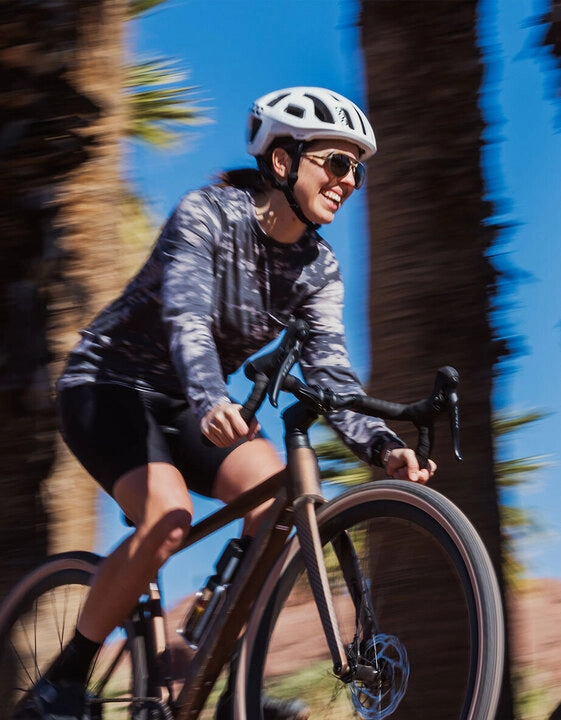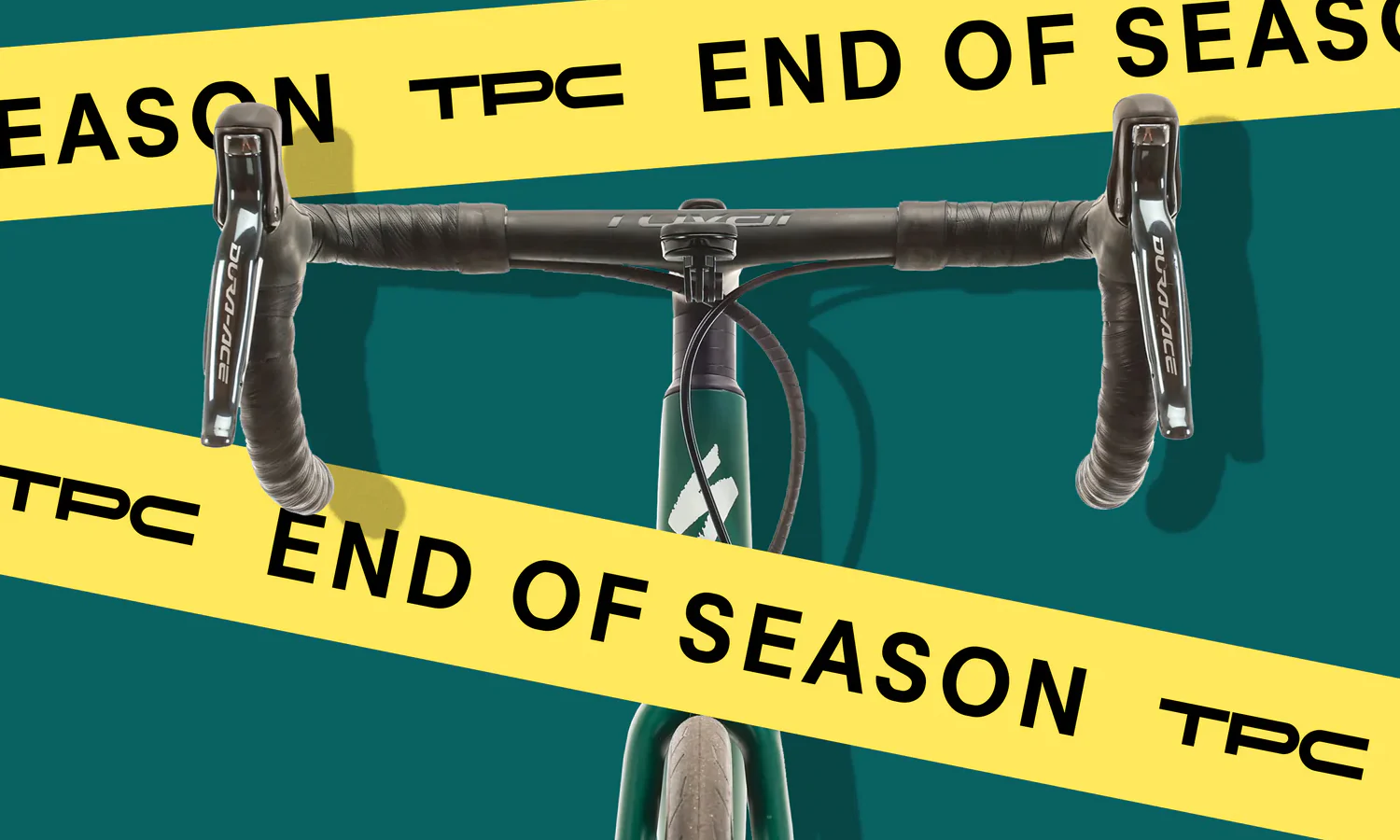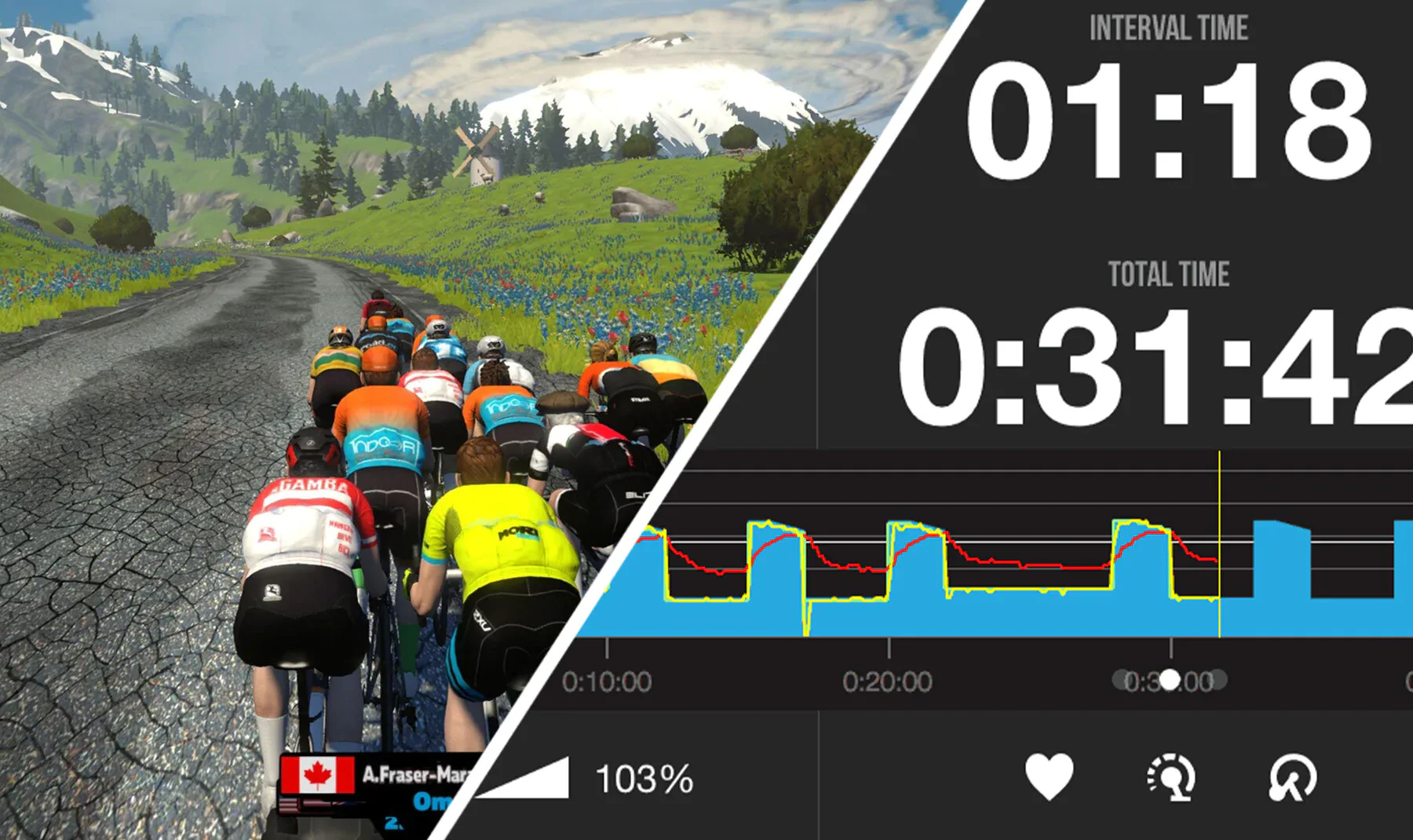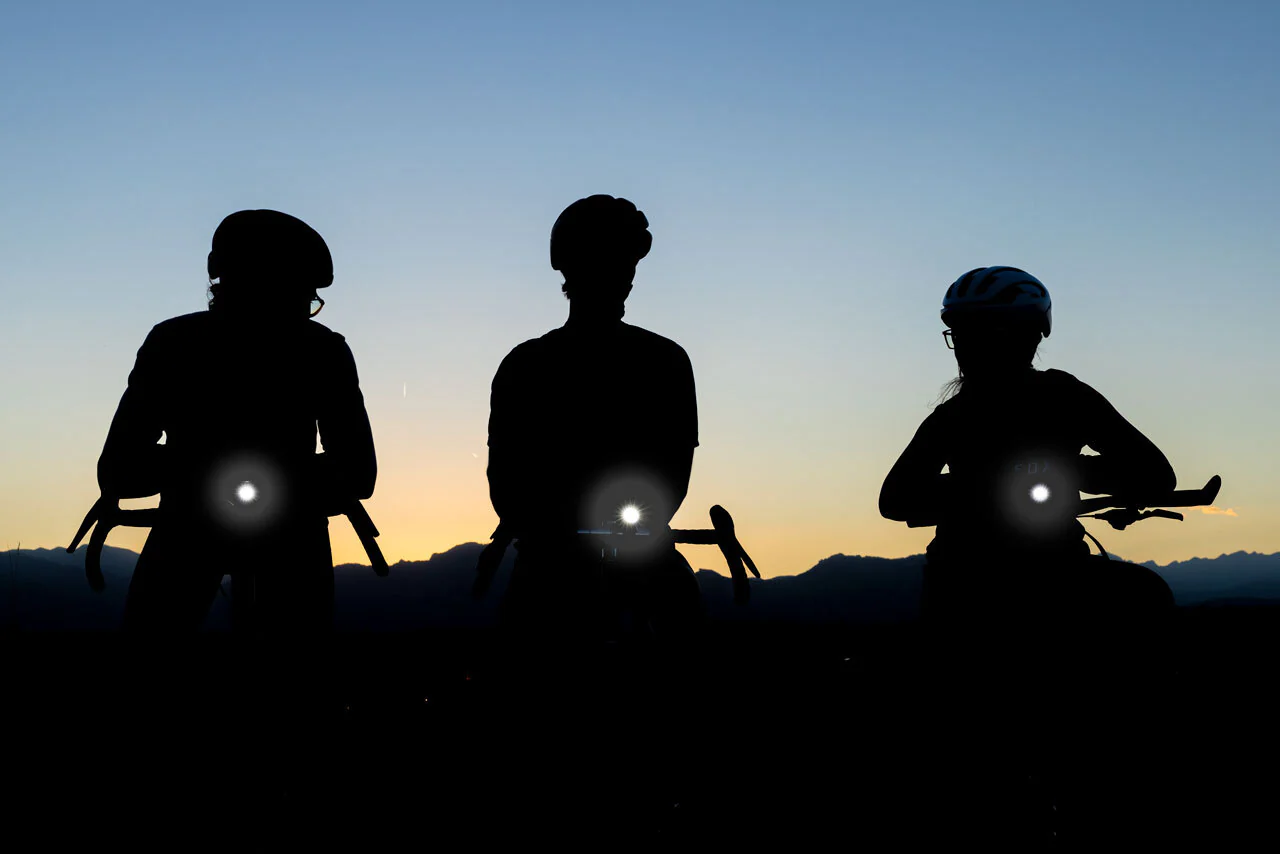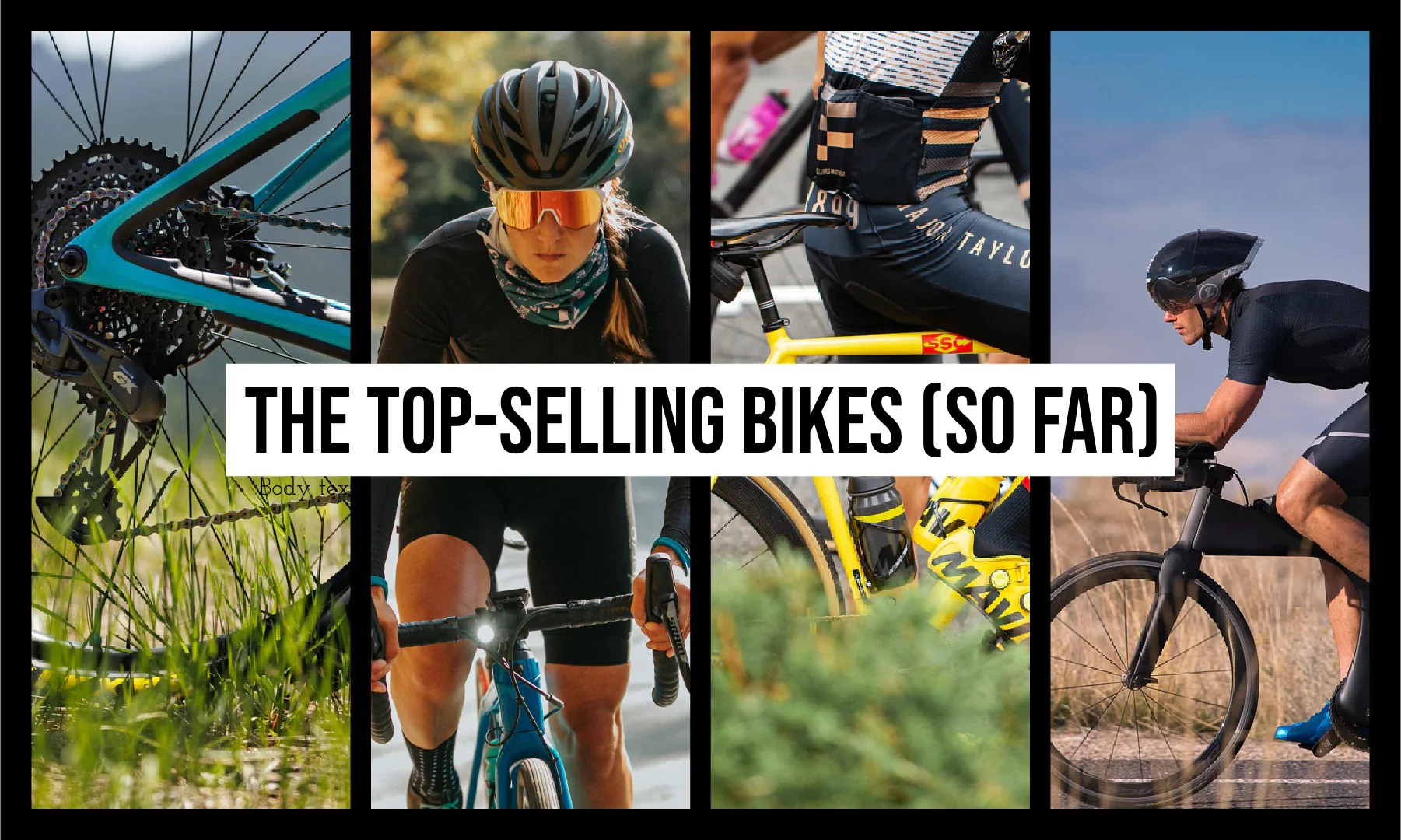Here’s a riddle: Your bike has a component that costs nothing and weighs nothing. But it is essential if you want to go ride. What is it?
Well, this story’s headline probably gave away the answer. It is the air in your tires.
Depending on your experience level, you might be able to gauge your bike tire pressure with a quick pinch of the tire. Or, you might be a little surprised to hear that bike tire PSI needs to be checked far more regularly than those on your car.
This how-to guide is geared toward the latter group of cyclists, beginners. But hopefully, riders of every ability level can learn a little more about the precious pressurized air that keeps us all rolling.
The Basics of Bike Tire PSI
Pneumatic tires on any vehicle are supported by pressurized air in an airtight chamber. Higher PSI (pounds per square inch) makes the tire harder. Lower PSI makes it feel softer. Bike tire pressure has a huge impact on how a bike performs. Checking your tire pressure is the simplest and most important piece of regular maintenance you should perform.
So where do you begin if you’re new to cycling and just got a road, mountain, gravel, or cyclocross bike? The ideal tire pressure will depend a lot on your weight, your tire width, and your riding style.
Before we dive into the details, check out our recommended starting points below...
Road Bike Tire Pressure by Weight & Tire Size
|
23mm |
25mm |
28mm |
30mm |
32mm |
|
|
100 lbs |
70 |
65 |
60 |
55 |
50 |
|
110 lbs |
72 |
67 |
62 |
57 |
52 |
|
120 lbs |
74 |
69 |
64 |
59 |
54 |
|
130 lbs |
76 |
71 |
66 |
61 |
56 |
|
140 lbs |
78 |
73 |
68 |
63 |
58 |
|
150 lbs |
80 |
75 |
70 |
65 |
60 |
|
160 lbs |
82 |
77 |
72 |
67 |
62 |
|
170 lbs |
84 |
79 |
74 |
69 |
64 |
|
180 lbs |
86 |
81 |
76 |
71 |
66 |
|
190 lbs |
88 |
83 |
78 |
73 |
68 |
|
200 lbs |
90 |
85 |
80 |
75 |
70 |
|
210 lbs |
92 |
87 |
82 |
77 |
72 |
|
220 lbs |
94 |
89 |
84 |
79 |
74 |
|
230 lbs |
96 |
91 |
86 |
81 |
76 |
|
240 lbs |
98 |
93 |
88 |
83 |
78 |
|
250 lbs |
100 |
95 |
90 |
85 |
80 |
Gravel Bike Tire Pressure by Weight & Tire Size
|
35-38mm |
38-42mm |
42-45mm |
47-50mm |
|
|
100 lbs |
35 |
30 |
25 |
20 |
|
110 lbs |
36 |
31 |
26 |
21 |
|
120 lbs |
37 |
32 |
27 |
22 |
|
130 lbs |
38 |
33 |
28 |
23 |
|
140 lbs |
39 |
34 |
29 |
24 |
|
150 lbs |
40 |
35 |
30 |
25 |
|
160 lbs |
41 |
36 |
31 |
26 |
|
170 lbs |
42 |
37 |
32 |
27 |
|
180 lbs |
43 |
38 |
33 |
28 |
|
190 lbs |
44 |
39 |
34 |
29 |
|
200 lbs |
45 |
40 |
35 |
30 |
|
210 lbs |
46 |
41 |
36 |
31 |
|
220 lbs |
47 |
42 |
37 |
32 |
|
230 lbs |
48 |
43 |
38 |
33 |
|
240 lbs |
49 |
44 |
39 |
34 |
|
250 lbs |
50 |
45 |
40 |
35 |
Mountain Bike Tire Pressure by Weight & Tire Size
|
2.0-2.2” |
2.25-2.35” |
2.4-2.6” |
2.8-3.0” |
|
|
100-120 lbs |
16-20 |
14-18 |
12-16 |
8-12 |
|
120-140 lbs |
18-22 |
16-20 |
14-18 |
10-14 |
|
140-160 lbs |
20-24 |
18-22 |
16-20 |
12-16 |
|
160-180 lbs |
22-26 |
20-24 |
18-22 |
14-18 |
|
180-200 lbs |
24-28 |
22-26 |
20-24 |
16-20 |
|
200-220 lbs |
26-30 |
24-28 |
22-26 |
18-22 |
|
220-240 lbs |
28-32 |
26-30 |
24-28 |
20-24 |
|
240-260 lbs |
30-34 |
28-32 |
26-30 |
22-26 |
NOTE: The tire pressure ranges listed in these charts are general recommendations that should work for most novice-intermediate riders.
- Heavier riders will need to ride higher pressures and lighter riders will need to ride lower pressures.
- Narrower tires will require higher pressures, while wider tires can run lower pressures.
- These pressure ranges are just general guidelines meant to provide a good starting point for you to experiment.
It's okay to use tire pressures that are higher or lower than the recommended ranges above. The ideal tire pressure will depend a lot on your specific tire and wheel, and your personal preferences, and you should be able to dial it in after a few rides. Read on below to learn about the variables that might lead you to add more PSI or take a little out.
 Note: NEVER exceed the maximum tire pressure listed by the tire or rim manufacturer.
Note: NEVER exceed the maximum tire pressure listed by the tire or rim manufacturer.
Hookless rims and tires, for example, have a max pressure of 72.5 PSI. If you need to exceed the max tire pressure to achieve your desired ride characteristics, the best option is to move to a wider tire that can be run at lower pressures.
Note On Tire Pressure Gauges
Having an easy-to-read tire pressure gauge is key to setting up your tire pressure. A lot of pumps will have built-in gauges. There is a chance these gauges are a bit inaccurate. If you suspect yours is off, that is fine, as long as you know what to expect and are consistent in checking your tires before each ride. If you’re really concerned, try comparing it with a pump that you know will read true, like one at your local shop or an accurate digital tire pressure gauge.

Key Considerations for Tire PSI
Ready to start tweaking your tire pressure for optimal performance? Let’s start with the basic principles of tire pressure so you can determine the right PSI for your bike. The key considerations are tire width, rider weight, terrain, and tubeless.
Generally, narrow tires, heavier rider weight, and rougher terrain require a bit more PSI. On the other hand, wider tires, lighter riders, smoother terrain, and a tubeless set-up make for lower tire pressure. Here’s why.
Tire width and what it means for PSI
All tires require a certain amount of air pressure to prevent them from bottoming out on the rim. Wider tires have more air volume. This makes it possible to ride them at lower pressures for more comfort and traction. Conversely, a narrower tire, like a 28mm road tire has comparatively much less volume so it needs more air pressure to prevent bottoming out. If you have a 2.5” enduro tire on your mountain bike, you’ll be able to ride at pressures close to 20 PSI. Rolling out on the road bike with 28mm slicks? Anything less than 80 PSI would be risky.
Rider weight and bike tire pressure
You don’t have to be a physics Ph.D. to understand how your body weight interacts with tire pressure (heck, I didn’t even take a physics class in high school). Just sit on your bike’s saddle and watch how the tire compresses and deforms as more weight is applied. The idea is to strike a balance so the pressure supports your weight but doesn’t end up rock-hard. Therefore, more rider weight requires more tire pressure. For example, I weigh about 150 pounds and ride 30 PSI on my gravel bike. A rider who is 20 pounds heavier should definitely consider another 3-5 PSI of air.
How terrain influences bike tire PSI
Tire volume and rider weight are nice and predictable, but the terrain you’ll ride is not. This takes some trial and error to learn and mostly applies to mountain biking, gravel, or cyclocross. Eventually, you’ll be able to look at your local trails and tell which might require a little more air pressure (think: chunky rocks that might pinch your tire and smash your rim), and which are smooth enough to be ridden with softer tires for better grip in corners.
When you’re out riding, try to monitor the way your bike feels on bumpy terrain. Can you feel a harsh clunk when your wheel strikes a sharp rock? Your pressure might be too low. Does your bike seem skittish in loose corners and bouncy on rough stretches? Perhaps try dropping your PSI a bit.
For road riding, tire pressure won’t vary as much. However, the conventional wisdom of pumping up tires to a rock-hard 120-130 PSI has been debunked. Unless your pavement is glass-smooth, pressures in the 90-100 PSI range will be faster. The tire will absorb slight bumps and vibrations, which is faster than an unyielding, hard tire. You’ll also get more grip in the corners. If you ride in wet weather, slightly less pressure would also be prudent to improve traction.
“Over the last few years, we’ve dropped our PSI ratings even on the narrower tires by 10-15 PSI,” says tire expert Johs Huseby, WTB’s Director of Global OEM Sales and Product Vision. “WTB, coming from the dirt side of the spectrum, we’ve always erred on the lower side.”
Tubeless bike tires
Tubeless technology is now widespread in the cycling world, with the exception of some road wheels and tires. This can also affect your tire pressure. Because tubeless systems don't rely on an inner tube, you will be able to run a little less pressure and not worry about pinch-flatting your tire. You’ll get better traction and comfort with less pressure which is beneficial for mountain bike trails and gravel roads. To learn more about tubeless systems, see our Beginner’s Guide to Tubeless.
Tire pressure and your bike's performance
 The final consideration when it comes to tire pressure is worth its own section in this article, and even that won’t be enough space to truly explore every nuance of how tire pressure influences a bike’s performance. The primary factors are traction, rolling speed, and comfort. Ride with the correct tire pressure and you’ll be able to maximize all three variables. Too much or too little pressure can compromise tire performance.
The final consideration when it comes to tire pressure is worth its own section in this article, and even that won’t be enough space to truly explore every nuance of how tire pressure influences a bike’s performance. The primary factors are traction, rolling speed, and comfort. Ride with the correct tire pressure and you’ll be able to maximize all three variables. Too much or too little pressure can compromise tire performance.
As hinted at earlier in this article, lower tire pressure usually improves traction. This is because it increases the tire’s contact patch on the ground. A tire at lower PSI better conforms more to the ground it is rolling on, also improving grip.
Traction is essential in many situations, from cornering to climbing to braking. In each case, better traction lets you overcome your bike’s inherent tendencies. Forward momentum makes cornering more difficult, but if your tire grips well on a loose dirt corner, you’ll be able to change direction with the right technique and rider input. Momentum also works in opposition to braking forces. With the right tire pressure to achieve grip on loose surfaces or wet pavement, you’ll be able to stop or slow down quickly and more safely.
Your bike will feel more comfortable with the correct tire pressure. Like traction, this performance quality improves with lower pressure. The comfort afforded by lower pressure can be noticed on all of your bike’s touchpoints, from your feet to your saddle to your hands and shoulders.
There is a limit to how soft we’d want our tires to be, though. We love the increased traction that comes with low PSI, but eventually, a tire gets so soft that it has too much rolling resistance, making our bike feel slow. This will be most noticeable on hard, smooth surfaces like pavement. Too-low tire pressure can also hamper bike handling by making the front end resistant to steering input or causing the tire to roll excessively on the rim during cornering.
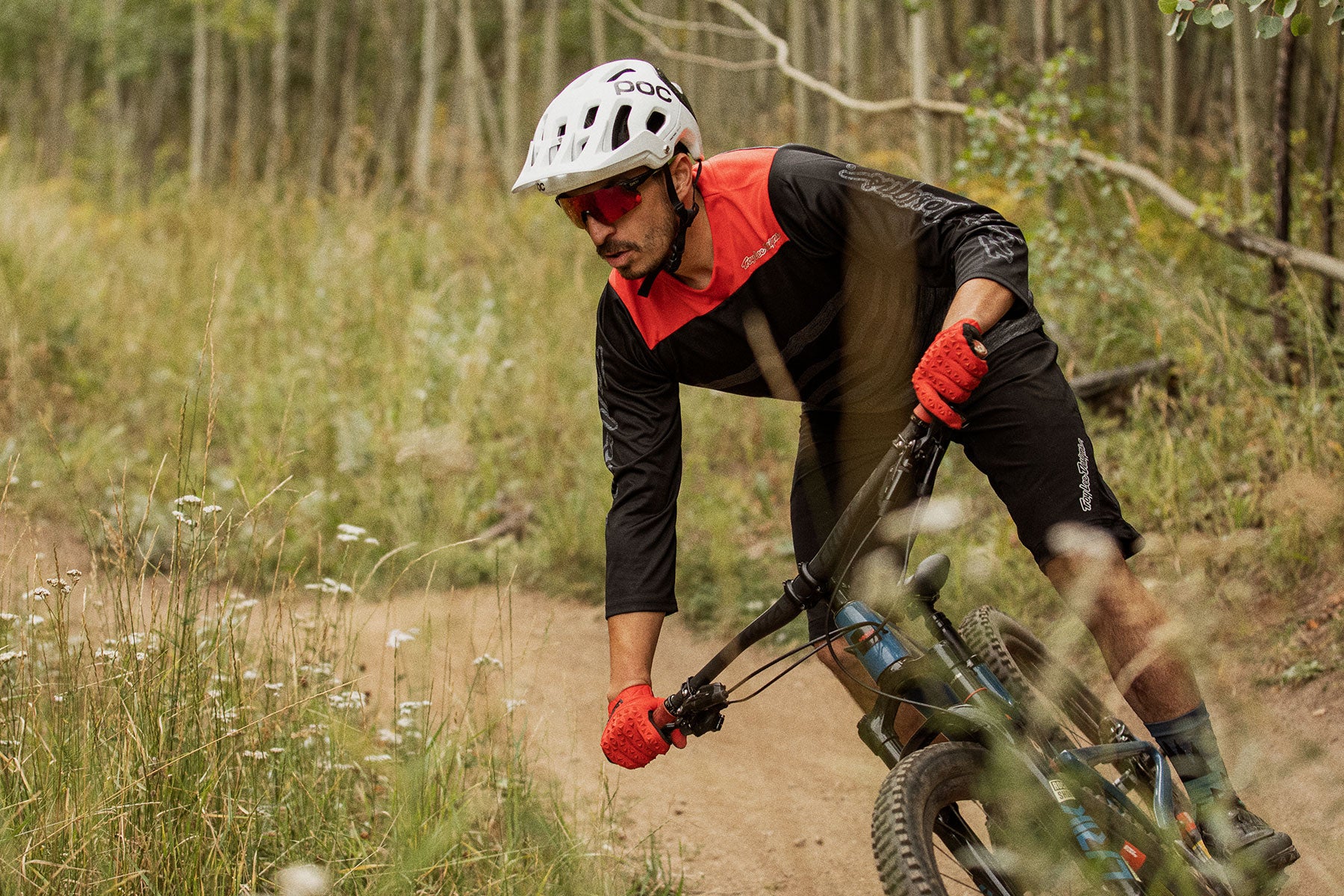
Advanced tire-pressure nerdery
The first step you can take toward totally geeking out on tire pressure is to adjust your PSI mid-ride to tinker with how your bike feels. This is something that’s most applicable to mountain, gravel, or cyclocross riding, but there’s always a chance you might encounter a surprise rain shower on a road ride that will necessitate a little less pressure.
It’s always easier to take air out of your tires during a ride than to add air back. When in doubt, start a ride on the high end of the PSI scale and let out air little by little, going off of feel. See if you can notice an improvement in traction. Be careful not to take too much out if you’re riding rough trails.
Mountain bikers often like to run slightly less pressure in their front tires, and that’s something you can experiment with too. The idea is that, due to body position, you have less weight on the front tire, so you can get away with lower PSI, thereby enjoying more traction for cornering. With more air volume in a 2.2-2.5” mountain bike tire, pressure can be fine-tuned with great effect.
“On a drop-bar bike, I tend to run pretty similar pressure, maybe in the front, I have two to three PSI less if I can even control that,” says Huseby. “On a mountain bike, I definitely run less in the front than in the rear, up to five PSI.”
The last thing mountain bikers can consider when playing with pressure is a new technology generally called a tire insert. The category’s “Kleenex” brand is CushCore, so you might hear fellow riders refer to inserts that way. No matter the brand, the general idea is to put a foam ring inside a tubeless tire, which will reduce air volume and protect your rim from damage. Inserts allow you to run lower pressure with fewer drawbacks. If that rabbit hole looks enticing, check out our article on tire inserts.

CushCore Pro Tire Insert Set
$68.99
It’s all about balance
You might be the type to tinker with your PSI, or you might prefer the set-it-and-forget-it approach. Either is fine if you have a grasp of the fundamental balancing act that goes into deciding on how much to pump up your tires. You find that balance point by going low enough to maximize traction and comfort without risking flat tires or sacrificing rolling resistance and handling.
Compared to most vehicles, a rider on a bike is very lightweight and slow-moving, making the correct tire pressure far more important from a performance standpoint. Remember, air is free, so make sure to use it to your advantage whenever you’re headed out for a ride!
